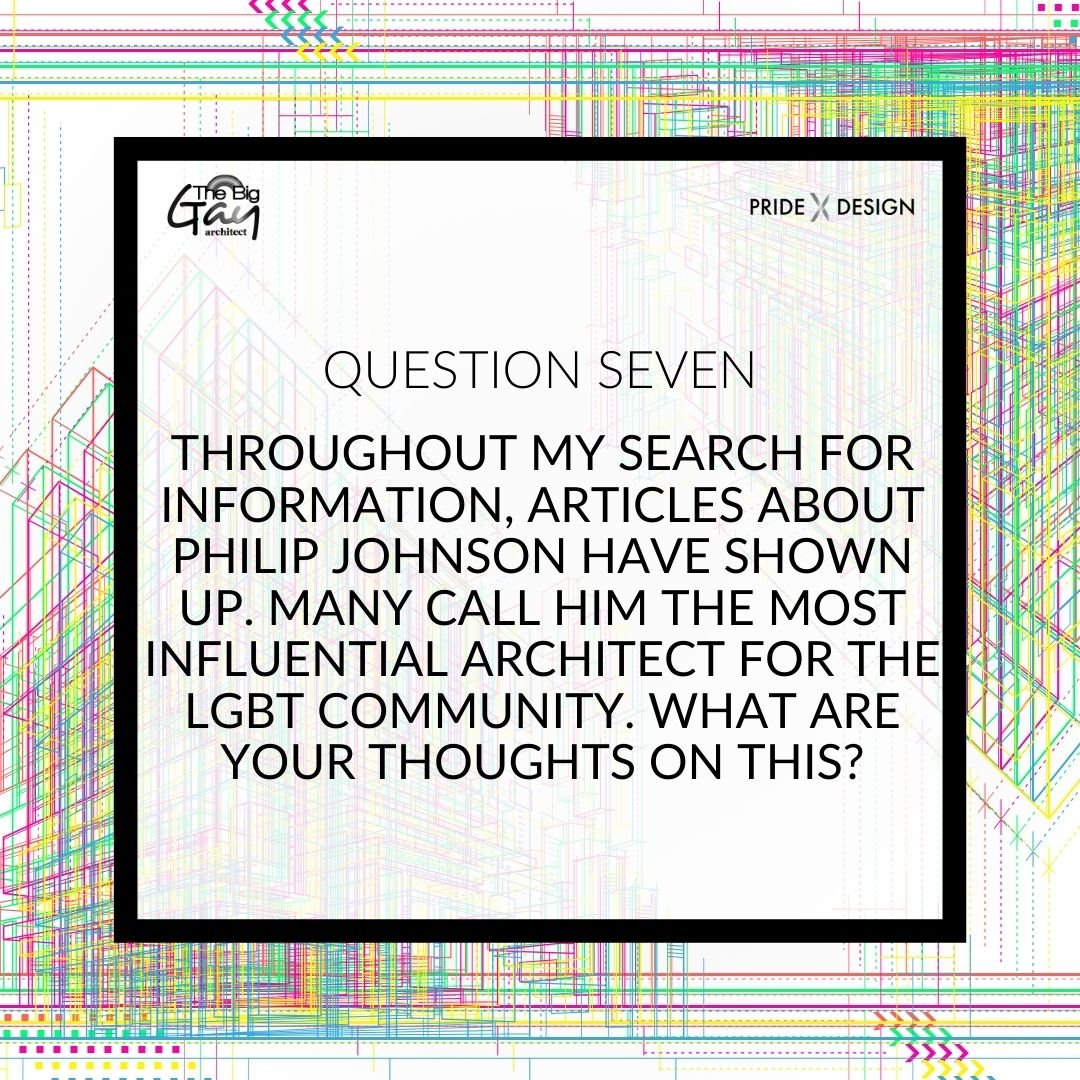IN THE SPOTLIGHT
In October 2013, Larry Paschall, founder of Spotted Dog Architecture and the Big Gay Architect, was asked a series of questions about what it means to be queer in architecture . Ten years later, The Big Gay Architect and Pride by Design are collaborating in an effort to see how responses to the following questions may have changed (or not) over 10 years. This survey will be broken into three parts including:
Part One | Setting the Stage - introduction questions to generally get to know where those who respond are coming from
Part Two | Hearing from you - short answer responses to the original questions from 2013
Part Three |Establishing a baseline - expanded demographic questions to begin to establish a baseline for LGBTQIA+ architects and design professions
What we will do with these questions? First, no personal information will be shared and all demographic-related questions are optional to be anonymous. Responses received through Part Two will be incorporated into a blog series beginning in 2024! Responses received in Part Three will be used to better understand where LGBTQIA+ students and professionals are in their careers, across the US, and gaps in support or community that could emerge as opportunities to further build a network of the queer design community.
-
Voices
Where Pride by Design began - the power of storytelling to transform. In this space, we will continue to amplify your voice and bring visibility to your narrative.
-
Community
Looking for an organization or community near you? Check these out! This map will continue to live and evolve as we hear of local communities supporting LGBTQIA+ design professionals. Know a group we should include? Please let us know!
-
Resources
Pride by Design aims to be in a constant place of learning, unlearning, growing, and evolving. This page will continue to change (and likely rapidly), but aims to start with a baseline of resources and understanding curated and shared largely from a place of personal experience. These are certainly not the only resources and will be added to, removed, and revised as we continue toward sharing resources and challenging others to walk the talk in supporting LGBTQIA+ architecture and design professionals.










